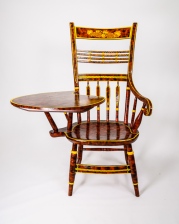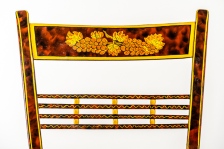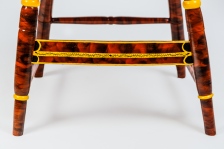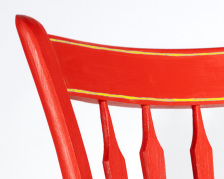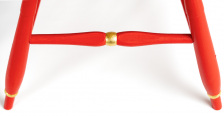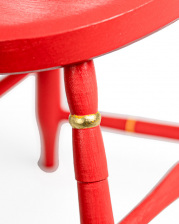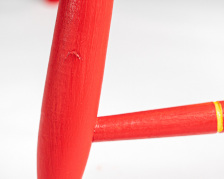18th & early 19th C. Chairmaking
The heyday of handmade American Windsor Chairs was during the mid 18th to early 19th centuries in places like Philadelphia, Boston and New York. Chairs were made at great speed. Division of labor was common even before the industrial revolution, but a single chairmaker using simple hand tools could make two side chairs a day, start to finish. Those guys were good!
Delightfully Quirky
Old chairs have a subtly quirky look. At a glance the chairs look symmetrical, but upon closer inspection asymmetrical leg angels and slightly rough surfaces are readily apparent. Truly reproducing these chairs takes a highly skilled craftsmen working quite quickly.
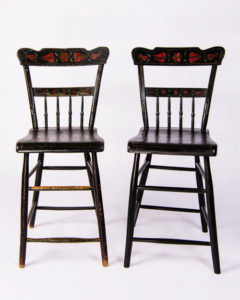
Early 19th Century chair on the left, my reproduction on the right. Look closely: the leg angles are asymmetrical on both chairs, but in different ways.
Museum-Quality Reproductions
Studying the original chair for a day or so, I take extensive measurements and try to learn how the parts were made, how it was put together and what tools were used. Then I use period tools, materials and techniques to make the new verion. My goal is not to make an exact copy, but rather a chair that looks like a brand-new chair made in the same shop that gave birth to the original chair. I can reproduce Windsor chairs, as well as ladderback (post-and-rung) chairs and stools.
Price: Roughly double the cost of my standard chairs. If you order multiple copies, the cost per chair goes down. Contact me to discuss your project.
Modern Designs, Traditional Sensibility
Any of my standard chairs can be made with a traditional look; textured, quirky, free. Oil paint, which was historically used on most chairs, unifies the design.
Price: 20% less than my standard chairs.
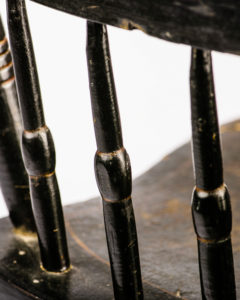
Heavy tool marks on an early 19th C. chair.
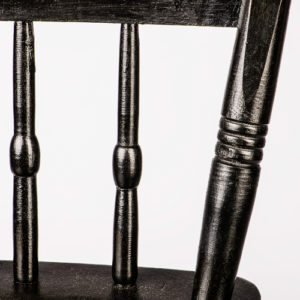
Tool marks and tear-out on the front of my reproduction
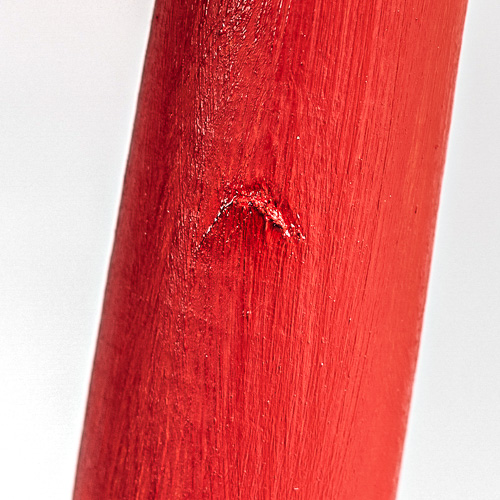
Coarse tool marks, like this mark from a hatchet, are common on old chairs (and my reproductions).

